AAC and ASD: Beyond Scripting
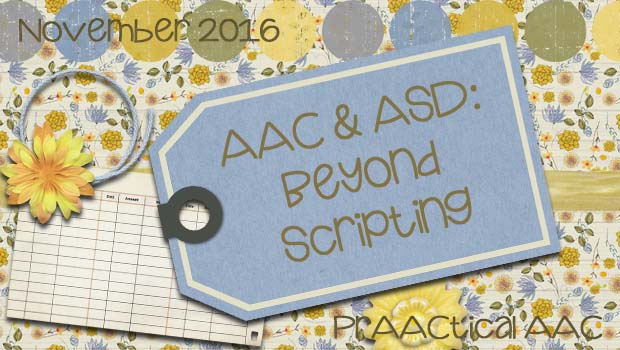
Today, we welcome Dr. Kimberly Ho, SLP and Director of Speech, Language and AAC Services at Confidence Connection in Needham, Massachusetts. In this post, she discusses how professionals in her organization are supporting AAC learners with autism on the journey toward flexible, generative language.
I am the Director of Speech, Language and AAC Services at an ABA clinic, so naturally we serve many individuals with Autism Spectrum Disorder (ASD) of all ages. A vast number of learners with ASD can speak, but their speech is not functional to meet their communication needs. We have begun to provide word-based AAC systems for these students to move beyond scripting.
Many individuals with ASD “script.” That is, they may not produce novel utterances, but rather chunks of phrases and sometimes entire sentences they have memorized. Sometimes this scripting is based on a character from a TV show or movie. Other times the script has been memorized in a specific pragmatic context. For instance, a child cut her finger and cried, her mom patted her on the shoulder and said “There there.” Now, whenever anyone is crying or sad, the child says “There there.” Scripting is beneficial for many individuals with ASD as it helps them to learn language. Another little girl used scripts from Dora the Explorer. Initially, the productions sounded bizarre and out of context, but as she matured, she began to use the scripts in appropriate pragmatic settings.
However, scripting is a far cry from novel utterance generation. A script is useful to meet one’s communication needs only in a constrained pragmatic context. In the example outlined above, saying “There there” to offer sympathy is acceptable if a child hurts him or herself. But it’s not appropriate for an adult.
Another child scripts, “I want itchie owie cream” whenever he experiences pain or discomfort of any sort. Let’s call him Jed. He learned this script when he had a mosquito bite and his mom put cream on the bite. She referred to it as “itchie owie” cream. Now the child uses this term when he’s too hot, not feeling well, or has an injury. He is not able to produce any other words to describe his symptoms or direct his care. The same child also requests “I want glue stick please” when he requires assistance or materials during any craft activity, even when a glue stick is not needed. Clearly his speech is not meeting his communication needs.
Speech language pathologists (SLPs) are beginning to recognize that individuals who speak but are mainly scripting, do indeed have a need for AAC. Many of these individuals are given phrase-based AAC systems such as TouchChat or Proloquo2Go. However, these systems encourage scripting. The child mentioned above, Jed, who produces “I want itchie owie cream” was given an iPad with TouchChat with Word Power. He produced “I want to drink water” appropriately to request water. However, he then produced the same utterance each time before taking a sip of water. He did not shift his gaze to a communication partner, though he was capable of doing so. He regularly produced a number of scripts, but did not use TouchChat to compose novel utterances.
Most page-based systems are set up so that each button automatically navigates the user to the next page using word/phrase/sentence prediction. That is, when the user selects the “I want” button, the next page that opens contains high frequency infinitives for requesting such as “to eat,” “to drink” or “to play.” Once the user selects the desired infinitive, the final page that opens contains fringe vocabulary words that are appropriate to the selected action word. For instance, if the user selected “I want” then “to eat”, the food page would open. Individuals with ASD quickly become automatic at producing phrases and sentences that are highly motivating. In the example of Jed, he produced I WANT TO DRINK WATER so quickly that his finger moved faster than the neurotypical eye could follow!
Requesting or “manding” scripts produced on phrase-based AAC systems are highly reinforced when the user is given their favorite food, drink or toy. To make matters worse, the page-based systems are programmed to stay open on the last page in the sequence: the highly preferred food, drink or toy. Individuals with ASD are prone to perseveration and providing this type of AAC system promotes scripting with AAC. Many users with ASD who have this type of AAC system request or mand for preferred food or toys with a full sentence such as “I want to eat cookie.” (See images below). The last page remains open so the user begins to push all the buttons of preferred items GUMMIES, COOKIES, CAKE, POPCORN. (Sadly, APPLE and SPINACH are hardly ever activated). So now we have scores of children with ASD with limited language skills and cavities to boot!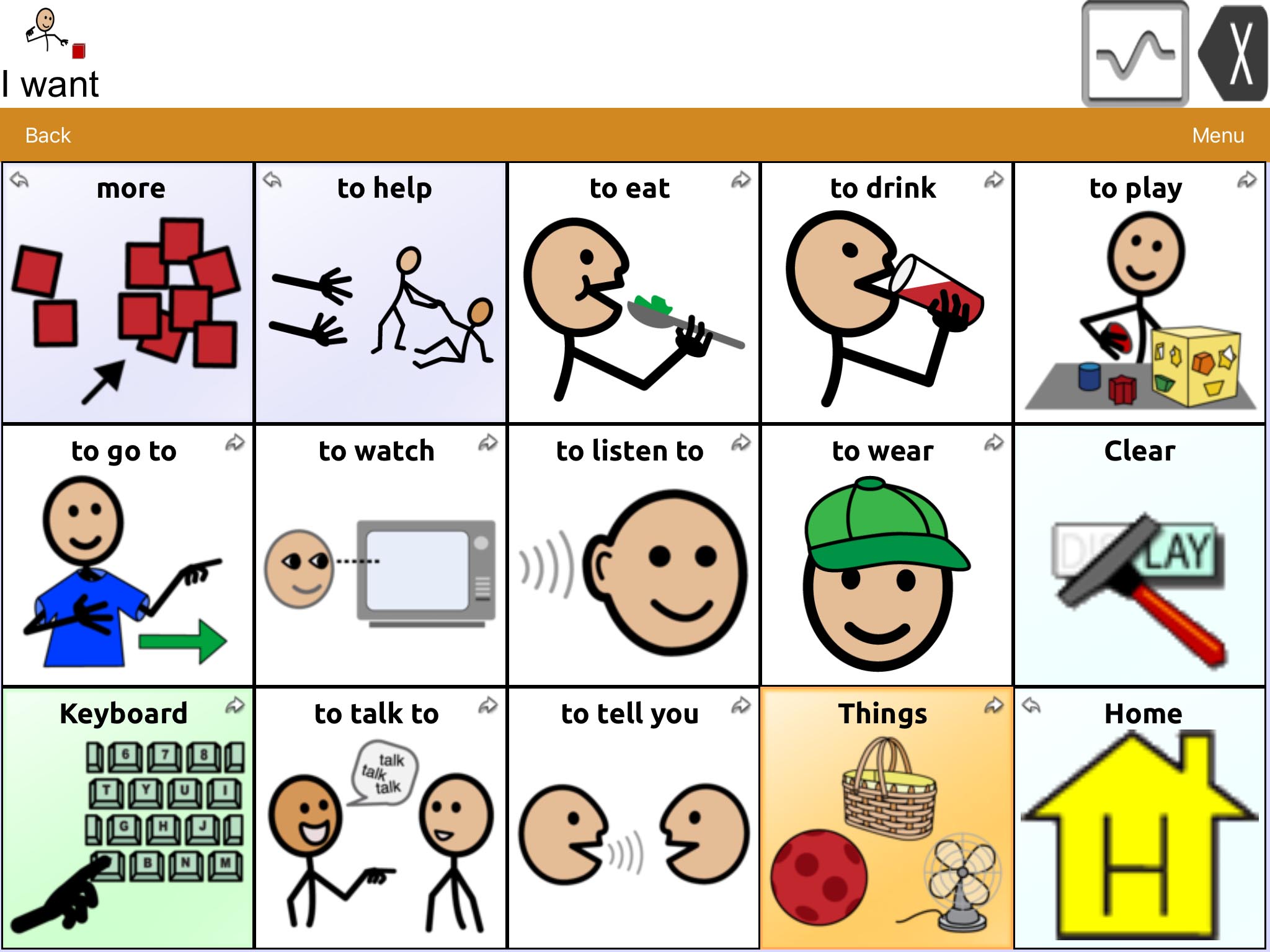
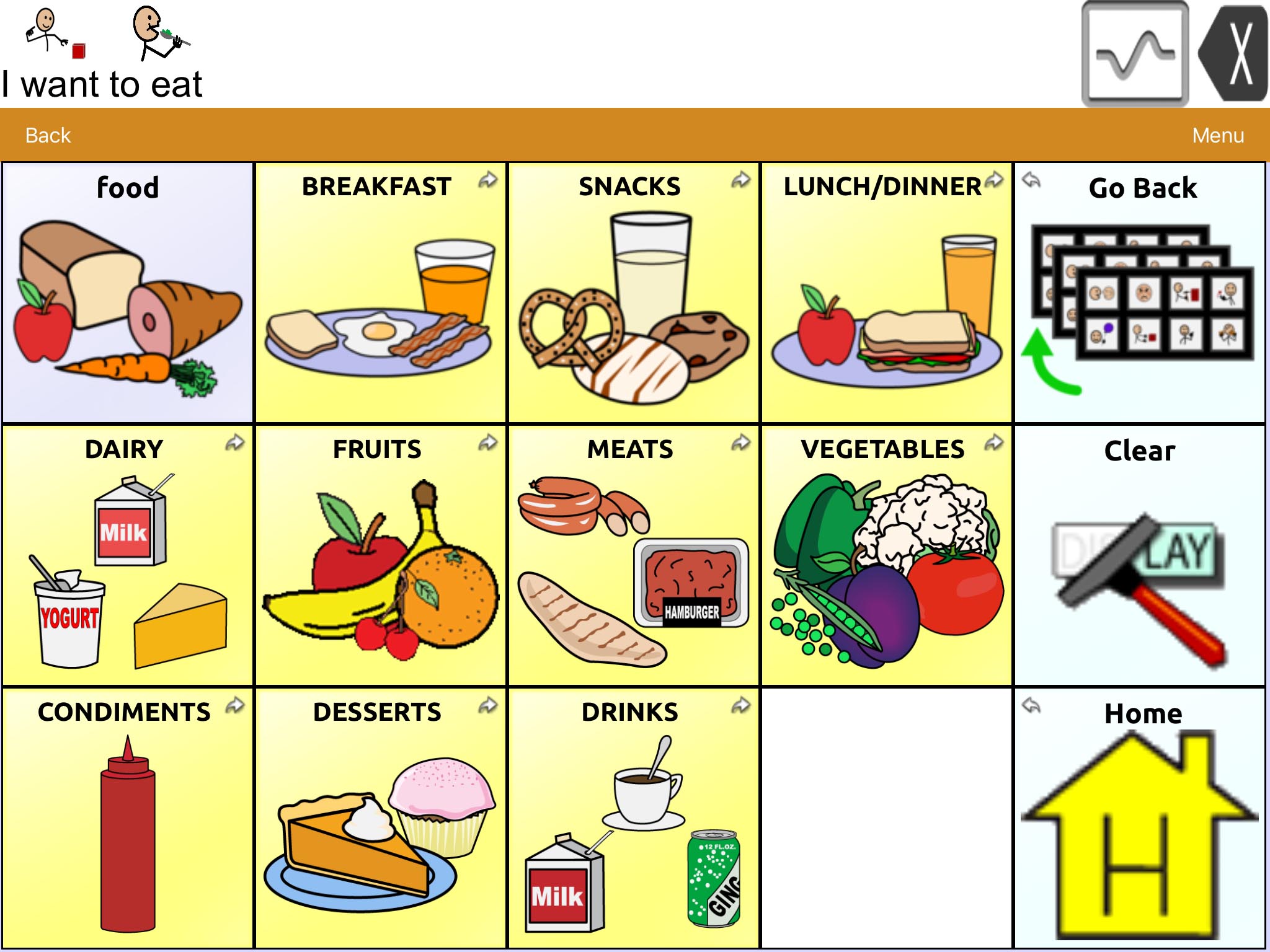
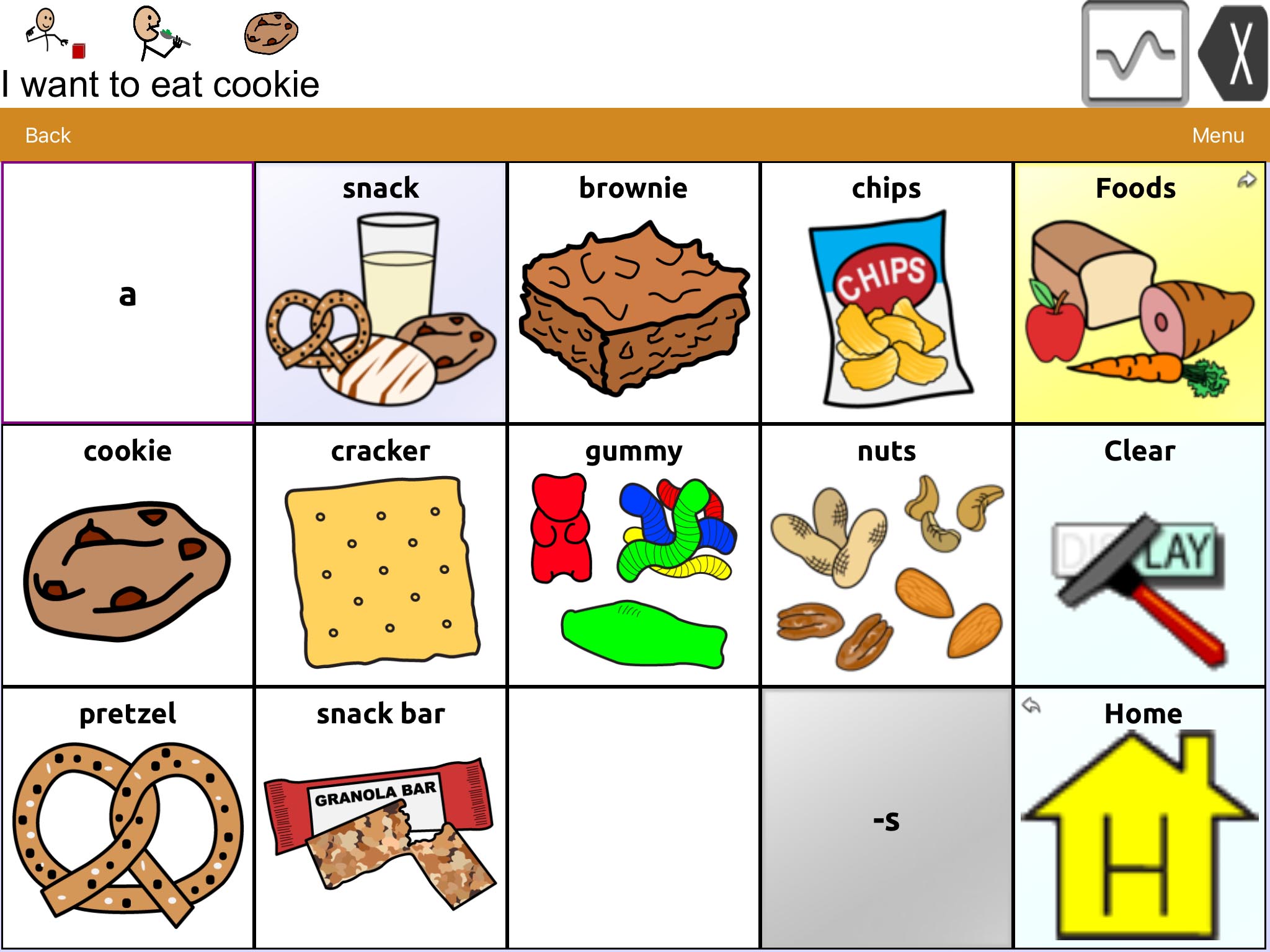
When an individual with ASD is first introduced to a word-based system such as such as LAMP: WFL, parents, SLPs, and teachers alike may feel that the user shows a regression in skills. That is, the child may have been producing whole sentences on TouchChat Word Power such as, “I want to play ball.” But as mentioned above, these productions were scripted chunks of language. The individual likely did not produce novel utterances with the individual words or phrases. LAMP: WFL, however, is word-based and rich in core vocabulary. The user with ASD must learn a number of core words and how to combine these words with other core or fringe vocabulary words in order to produce novel utterances.
Verbal Behavior (VB) is an approach to language teaching used by Applied Behavioral Analysis (ABA). VB therapy begins by teaching a large number of motivating nouns such as food or toy names. The learner can then request (mand) for highly preferred items. This communicative behavior is highly reinforced as the learner is given the item that is requested, so the mand is likely to be repeated.
When transitioning users with ASD from page-based to a word-based system, it is best to follow the VB principles of teaching single words first (mainly nouns, then verbs) to avoid scripting. If entire phrases and sentences are targeted, then the user may again be stuck on scripting. For example, Jed may quickly learn to produce I WANT DRINK WATER using LAMP: WFL as a script. However, he would likely not use these individual words in other linguistic contexts.
So Jed was first taught single words that were meaningful and motivating to him such as GO, STOP, HELP, EAT, DRINK, GYM, BATHROOM, CHIPS, and GUMMY. Within a month, Jed was producing a two-word utterance, GO GYM.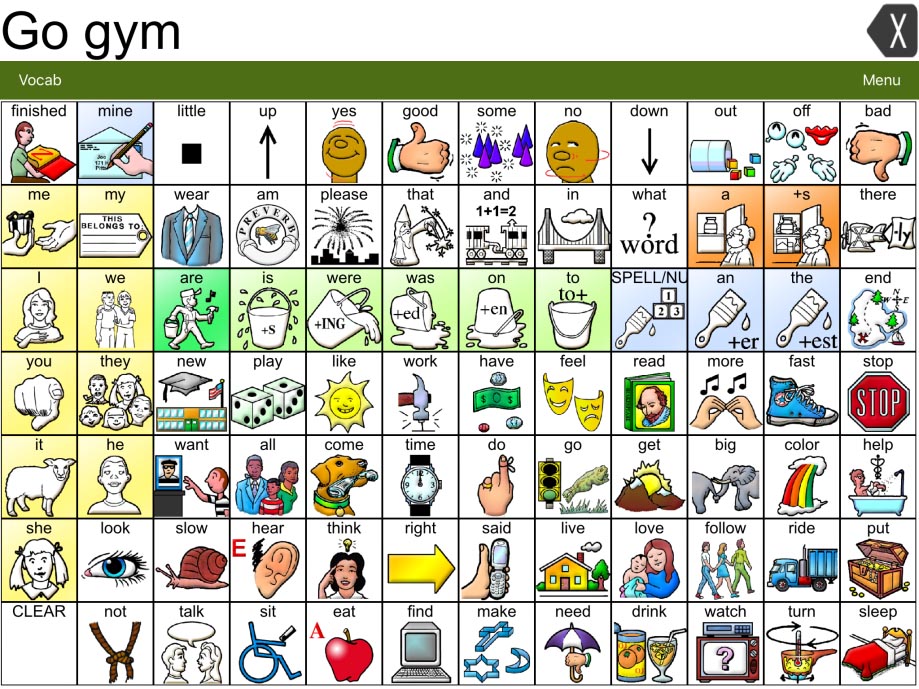
Jed was provided modeling across his day, at school and at an ABA clinic for outside therapies. Adults modeled on a separate iPad with LAMP: WFL, and he closely watched the models. He then imitated 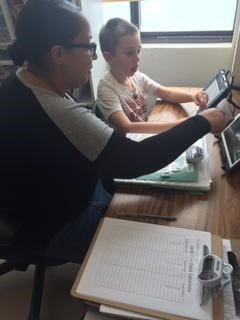 modeled phrases on his dedicated speech generating device (SGD), the Accent 800 with LAMP: WFL.
modeled phrases on his dedicated speech generating device (SGD), the Accent 800 with LAMP: WFL.
In 9 months, his language soared. In a 13-day language sample, Jed produced 250 different words and made 2,580 activations on his SGD. He used a variety of parts of speech including verbs, nouns, adjectives, adverbs, prepositions, pronouns, and interjections. Jed consistently produced two and sometimes three-word utterances. He began to use more speech, and his speech was less scripted and therefore more functional. His behavior was more regulated, and his rate of stereotypies (i.e., self-stimulating behavior) was drastically reduced. See images below of Jed looking at books and waiting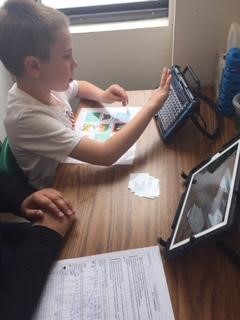 patiently to be picked up at the end of the day.
patiently to be picked up at the end of the day.
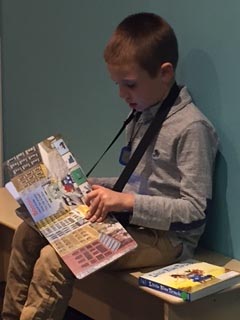 There are several “Jeds” in my clinic. We have provided word-based AAC systems for individuals with ASD who can speak, but for whom speech is not meeting their communication needs because of scripting. Word-based AAC systems are a valuable tool for individuals with ASD as it puts words in the visual domain. Most individuals with ASD are strong visual learners. Speech is only presented in the auditory domain. It is fleeting; quickly produced, and then gone. Individuals with ASD often suffer from sensory overload when they are not able to process spoken language. Extreme stress puts the body in to “Fight or Flight” mode and limits higher level cognitive functioning.
There are several “Jeds” in my clinic. We have provided word-based AAC systems for individuals with ASD who can speak, but for whom speech is not meeting their communication needs because of scripting. Word-based AAC systems are a valuable tool for individuals with ASD as it puts words in the visual domain. Most individuals with ASD are strong visual learners. Speech is only presented in the auditory domain. It is fleeting; quickly produced, and then gone. Individuals with ASD often suffer from sensory overload when they are not able to process spoken language. Extreme stress puts the body in to “Fight or Flight” mode and limits higher level cognitive functioning.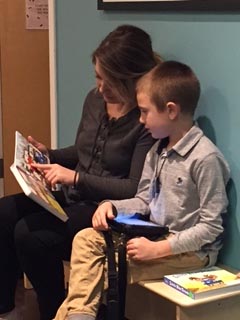
Minspeak (such as LAMP: WFL) is uniquely suited to this population as it puts language into the visual domain and can be accessed through motor automaticity. This is vital to individuals with ASD. Caregivers, therapists and teachers can speak to individuals with ASD through Minspeak. LAMP: WFL is a practical option as it can be presented on a modeling iPad which all communication partners can use to converse with the user. This is vital as many individuals with ASD who will not tolerate modeling on their own SGD.
It is exciting to see more and more individuals with ASD using word-based AAC systems like LAMP: WFL to help support their speech and language development. Let’s get the word out!
Filed under: Featured Posts, PrAACtical Thinking
This post was written by Carole Zangari

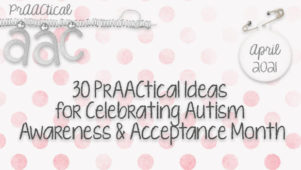
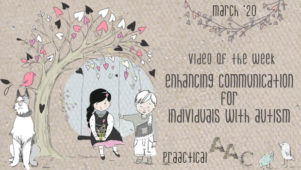
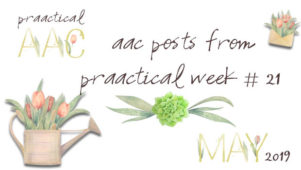
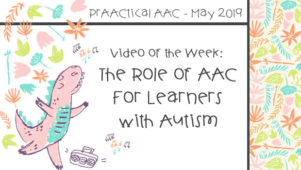
7 Comments
Why is LAMP WFL the best option for students with ASD? Touch Chat and Proloquo2Go can be modified so that the buttons behave the same way that LAMP buttons behave, i.e., navigating back to home after a selection is made on the snack page. LAMP and TouchChat with Word Power even share the same underlying programming; what you can do with one you can do with the other. LAMP’s pattern of navigating back after a single selection can be inefficient for users who actually want more than one thing on the page. All three programs require some customization to meet the user’s needs.
TouchChat with Word Power and Proloquo2Go are not phrase based systems, once you get beyond 20 items per page. However, phrases can be useful for some social situations. Users who can generate unique syntactically correct sentences still benefit from the efficiency of phrases and scripts when chatting, playing games or ordering food in a restaurant.
With consistent modeling in meaningful, motivating contexts throughout the day, I think LAMP, TouchChat and Proloquo can be equally effective for children on the autism spectrum.
Hi Susan,
Thanks for your comment. I completely agree – all systems can be:
1. programmed so that the user is navigated back to the main page,
2. set up as a word-based system, and 3. incorporated with phrase-based utterances. I have used all three applications in this way and continue to do so with certain learners. I tend to use LAMP:WFL or Unity for users with little or no functional speech however, as this language representation method (i.e., Minspeak) provides the most efficient access to core vocabulary and allows for motor automaticity.
Thank you for your post on this subject. It’s a tricky one to explain to the professionals and parents who hear 5 word sentences and believe the child is understanding language at this level. I plan to keep and share your article with our school teams and families.
I also agree that with correct customization, I’ve been able to pull off core word instruction with a variety of AAC apps including Touch Chat/Word Power, LAMP, Compass Core First and Proloquo Core. I appreciate the discussion of the nuances of these different systems as it relates to language development in our students with ASD. The biggest challenge I have is with systems which automatically navigate to new pages/popups when a core word is selected. On many of the programs we just need to select the correct settings or vocabulary levels to avoid this, but we have to understand it’s a problem to even think about these settings. I appreciate your explanation which brings this subject to the forefront and explains it eloquently.
Thanks again, Vicki
Thank you for posting on the subject. I wanted to point out that pictures that are posted of TouchChat with WordPower are not actually part of WordPower. The pictures you post of the carrier phrases with 15 buttons on the page would be a MultiChat 15 file in which there are 3 options for this phrase based vocabulary-student, adolescent, adult. WordPower uses high-frequency core words to facilitate quick and easy sentence generation. It also includes nouns and adjectives that are organized in logical categories. Grammatical word classes have been included. As a sentence is being built, you often find that the next word you want to say can be spoken with one or two button presses. WordPower is available in a number of button layouts ranging from 20 to 108 locations. http://touchchatapp.com/page-sets#pageset_wordpower
Thank you for your feedback, Lisa. The screen shots I included in my post were from MultiChat 15 Student vocabulary rather than Word Power, as I mistakenly labeled. This vocabulary was designed for school-aged users with emerging language skills and it includes single words, phrases and sentences. Word Power also offers a similar vocabulary, WordPower20 Simply which contains core words in combination with phrases.
No one language representation method or app can meet every person’s needs. We must evaluate each individual’s strengths and needs, as well as examine communication environments to determine the appropriate AAC system. The SETT Framework can help guide SLPs to determine the AAC Tool AFTER assessing the Student, Environments, and Tasks. http://www.joyzabala.com/
Thank you all for a lively discussion on this matter.
Do you have any tips for moving beyond manding with the AAC device? I have some students who are good at manding on their device but that’s all they do and they are unable to interact with their peers since all they do is request.
Hi Judi,
I apologize for my delay in responding. Fall is so busy! That is a great question. It can be challenging to move beyond manding! Students may be motivated to mand for action (i.e., direct others) to perform highly motivating tasks such as OPEN a jar, BLOW a balloon, let a spitting top or full balloon GO. I have had a lot of success with forming social dyads with students with ASD who use devices. We use a visual schedule with the same structure each time: greeting Hello song, Snack, Shared Storybook Reading, Turn taking activity such as rolling a ball, sometimes a craft with limited supplies (e.g., one glue stick), followed by a Good bye Song. I will be presenting a poster at ASHA in Nov on Social Dyads and presenting on Modeling vs. Prompting. I hope this helps. Good luck!